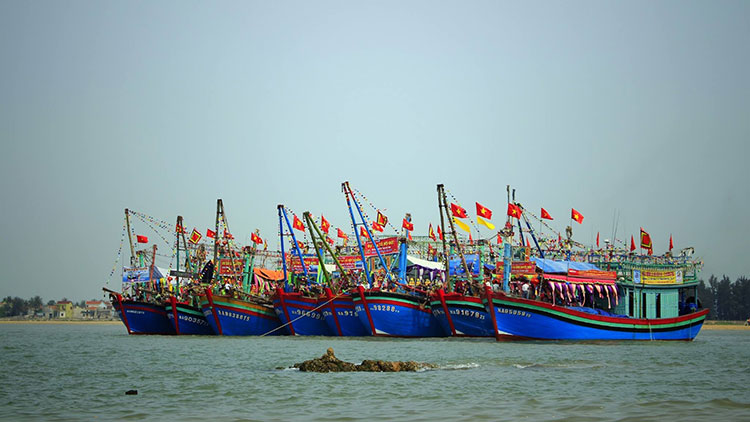In order to effectively protect seafood resources, the environment, and the ecosystem, the imperative to transition occupations in seafood harvesting is continually emphasized. Recently, this plan has been put into action following a decision by the Prime Minister.
In the Project on converting certain seafood harvesting occupations that impact resources and the ecological environment, which was recently approved by the Prime Minister, the goal is to convert certain seafood harvesting occupations that significantly impact resources, the environment, and the ecosystem into those with lesser impact. This includes transitioning some fishing vessels engaged in seafood harvesting that has a substantial impact on resources, the environment, and the ecosystem into other sectors. The aim is to gradually balance the fishing capacity in line with the potential for the recovery and regeneration of seafood resources, enhancing the productivity, quality, and efficiency of fishing fleets, protecting resources, improving the working environment, and ensuring that 100% of fishermen transitioning occupations have stable employment and income to safeguard their livelihoods after the transition.
By 2025, approximately 2,000 fishing vessels are expected to undergo conversion. This includes the conversion of 1,000 fishing vessels operating in nearshore areas (vessels with a length ranging from over 6 meters to under 12 meters) and the conversion of 1,000 fishing vessels operating in offshore areas (vessels with a length ranging from over 12 meters to under 15 meters).

In addition, the conversion of 700 trawl fishing vessels operating in offshore areas to other occupations such as trap, pot, seine, and line fishing, as well as post-harvest services. Furthermore, the conversion of 300 purse seine fishing vessels operating in offshore areas to other occupations such as trap, pot, seine, and line fishing, along with post-harvest services. Training and vocational education will be provided for 50,000 fishermen with fishing vessels to transition to suitable new occupations.
In the stage until 2030, the target is to convert a total of 4,000 fishing vessels. This includes the conversion of 2,500 fishing vessels operating in nearshore areas (vessels with a length ranging from over 6 meters to under 12 meters) and the conversion of 1,500 fishing vessels operating in offshore areas (vessels with a length ranging from over 12 meters to under 15 meters). Additionally, there will be the conversion of 1,000 trawl fishing vessels operating in offshore areas to other occupations such as trap, pot, seine, line fishing, post-harvest services, aquaculture, and aquaculture services, as well as recreational fishing. Another 1,000 purse seine fishing vessels operating in offshore areas will also be converted to other occupations such as trap, pot, seine, line fishing, post-harvest services, aquaculture, and aquaculture services, as well as recreational fishing. Training and vocational education will be provided for 70,000 fishermen with fishing vessels to transition to suitable new occupations.
Looking ahead to 2045, Vietnam aims to substantially complete the conversion of fishing vessels engaged in seafood harvesting that has a significant impact on seafood resources, the environment, and the ecosystem of coastal areas. This aims to contribute to the protection of seafood resources, improve the efficiency of fishing fleet management, and stabilize the livelihoods of fishermen. Vietnam also aims to actively and responsibly participate in the efficient and sustainable development of the fisheries sector.
One of the key tasks outlined in the Project is to strengthen state management. Specifically, no approvals will be granted for the construction, renovation, lease, or purchase of fishing vessels engaged in prohibited or restricted occupations according to legal regulations. Additionally, no fishing licenses will be issued for renovated or newly constructed vessels without the required approvals. Furthermore, the annual reduction of fishing licenses will be determined based on the type of occupation, with a reasonable addition of new permits to ensure the fleet reaches approximately 60% of operating vessels in nearshore areas, around 70% in offshore areas, and about 90% in offshore areas compared to the start of the project.
VietFish Magazine